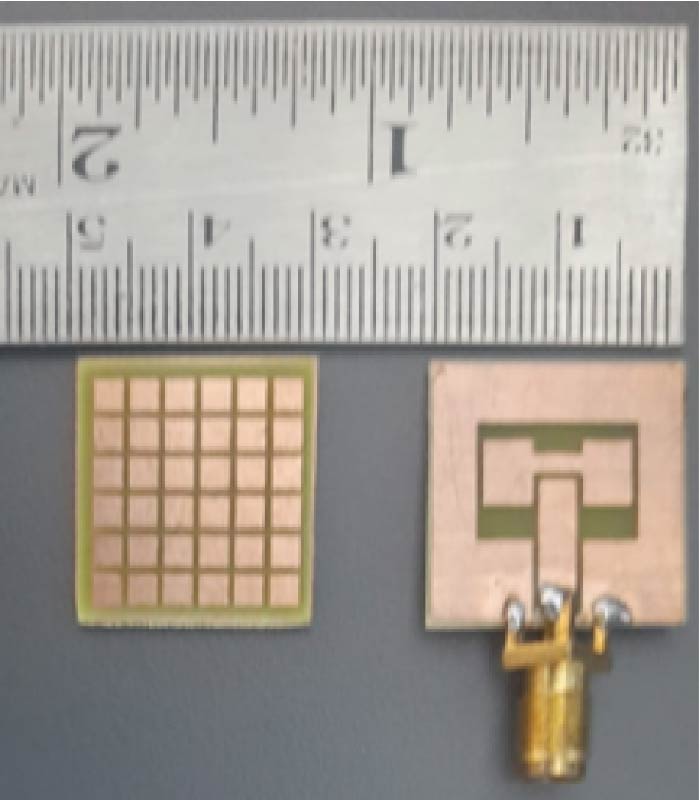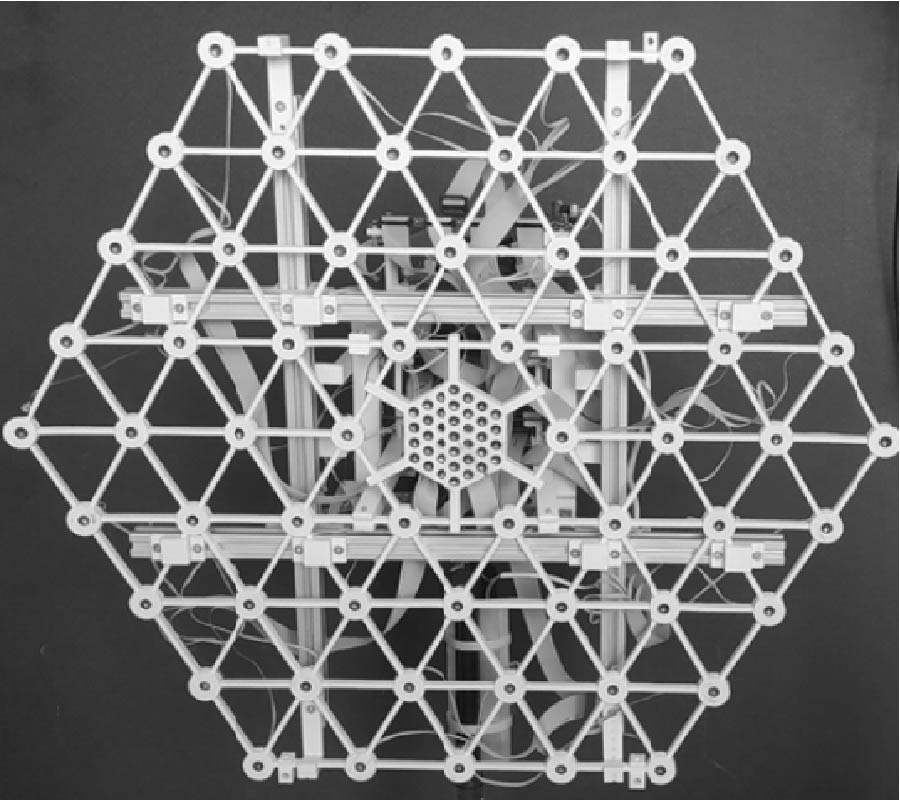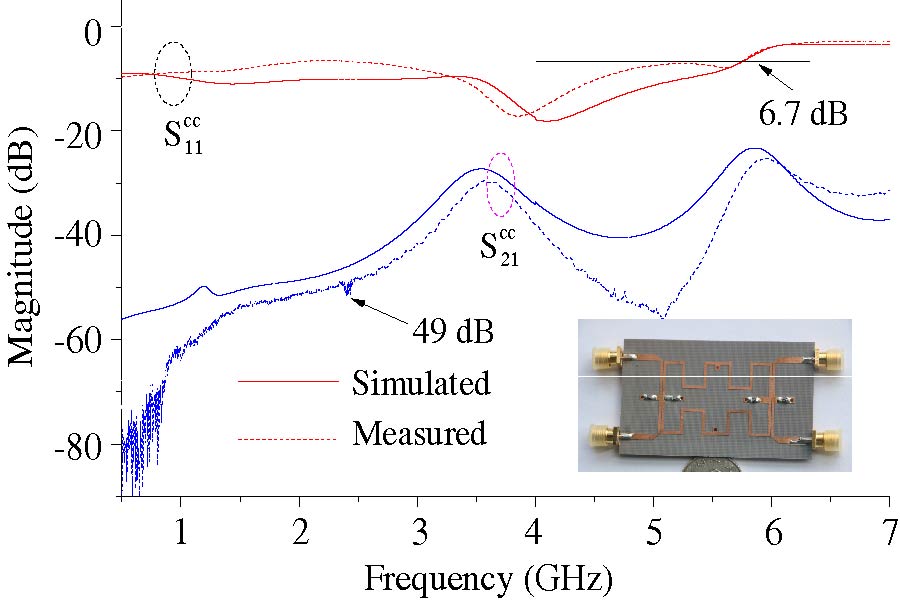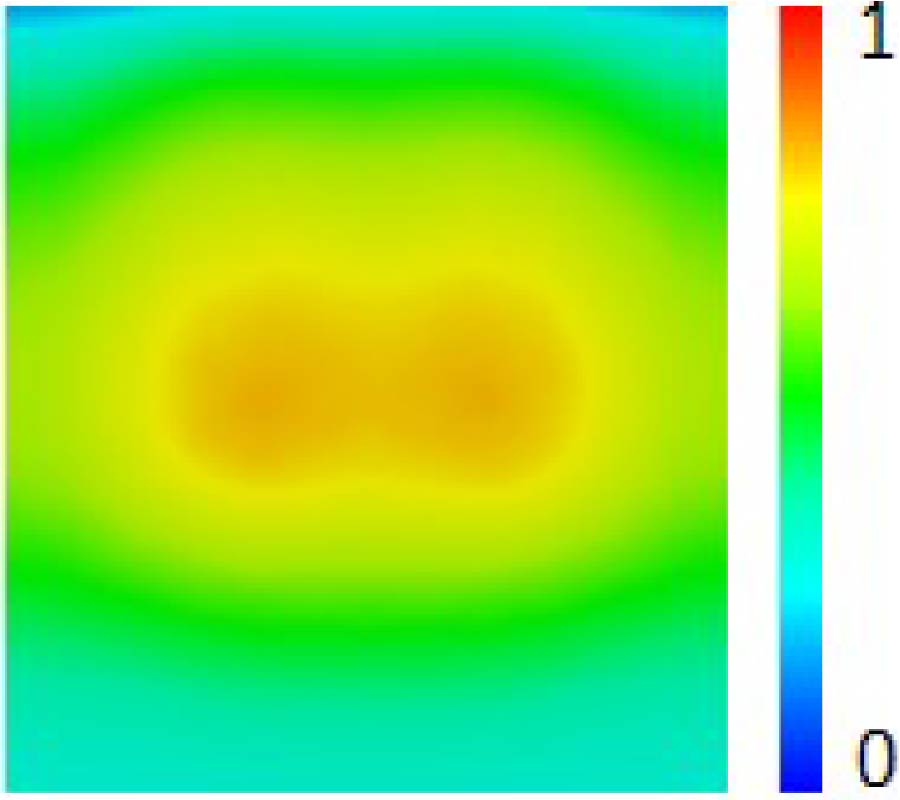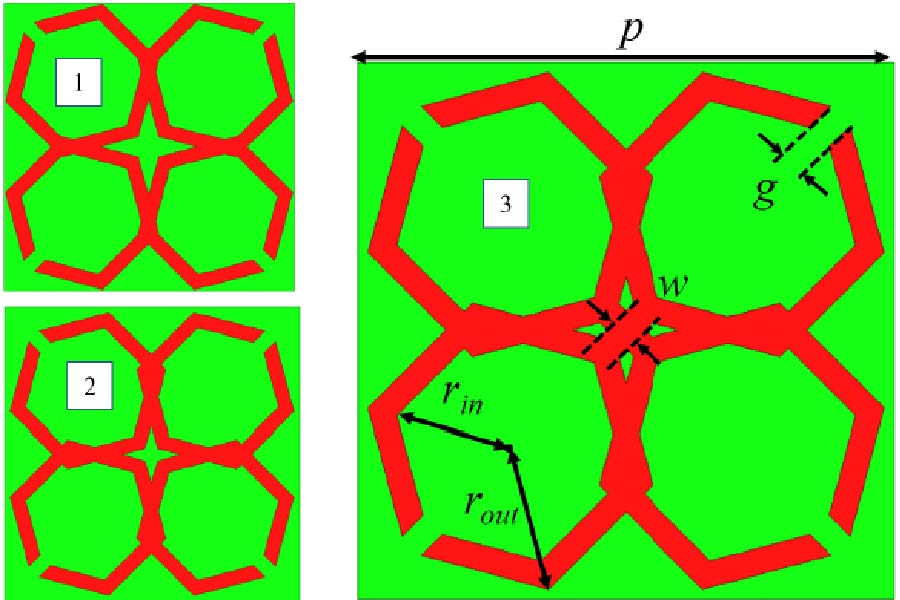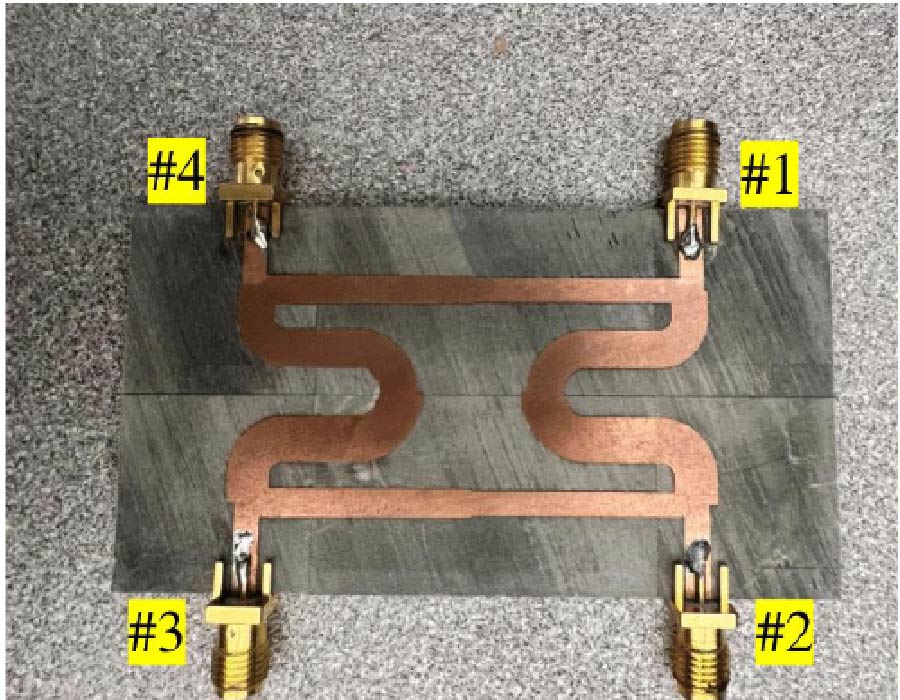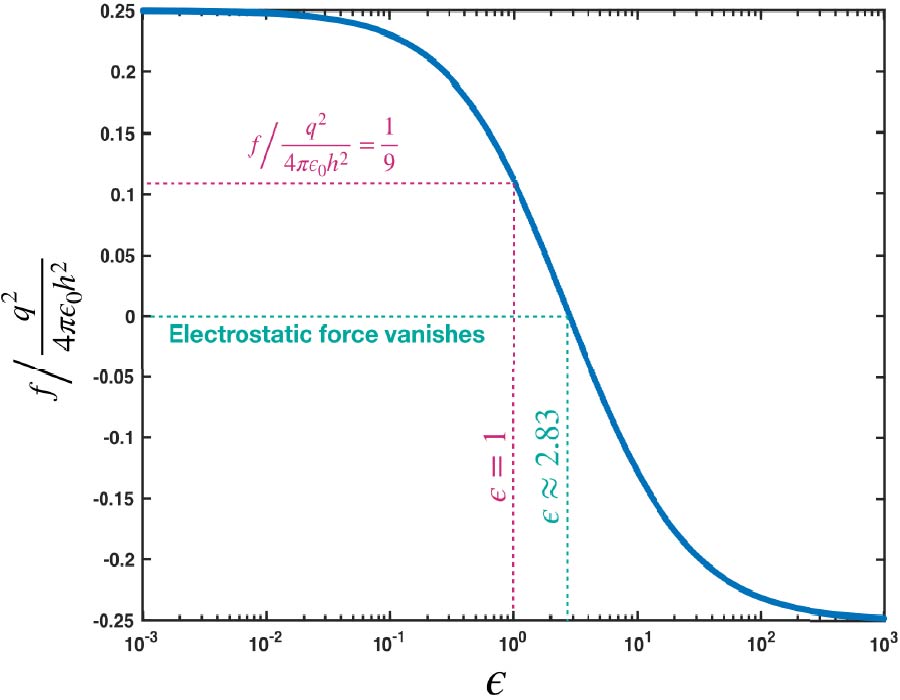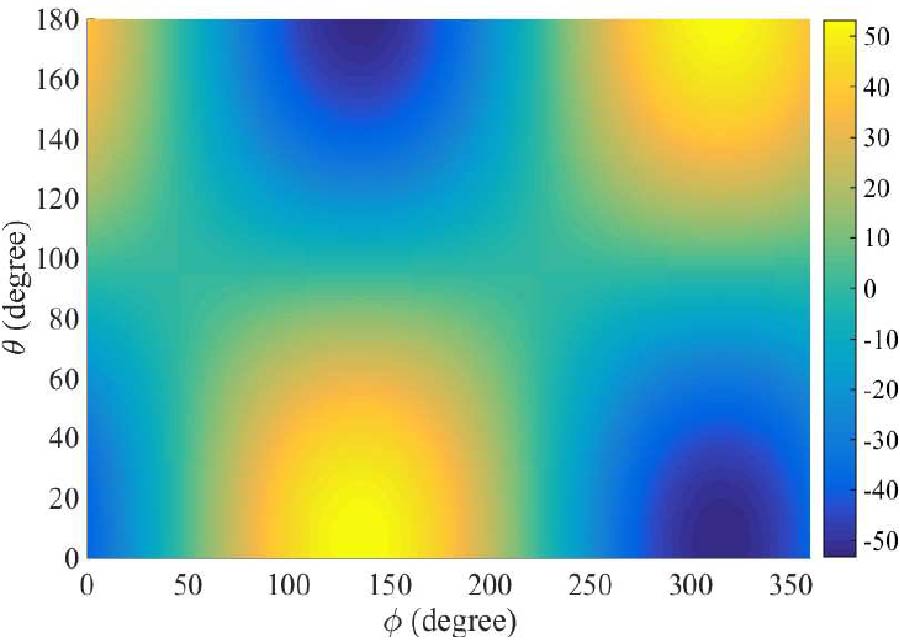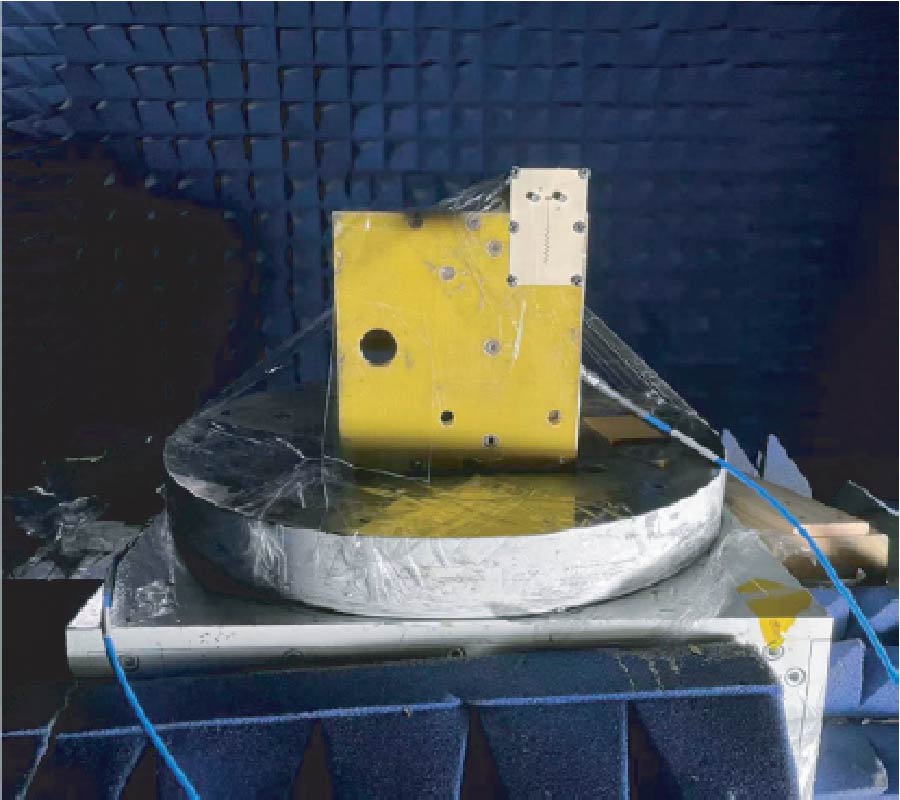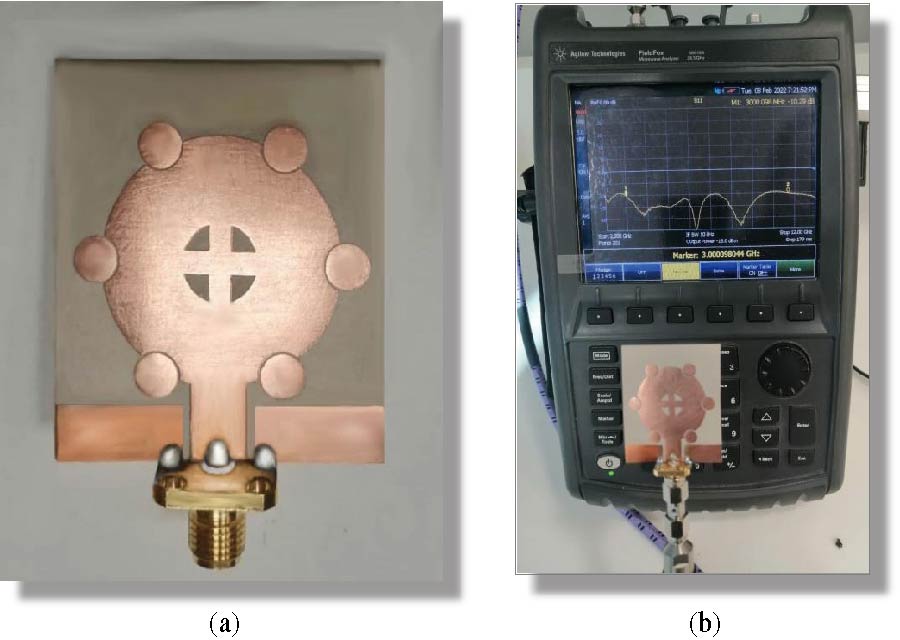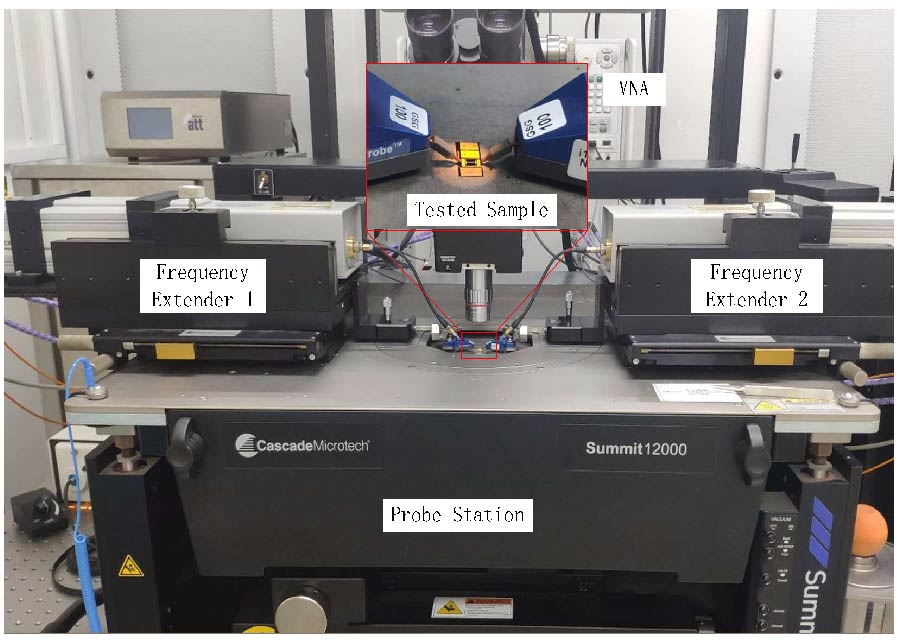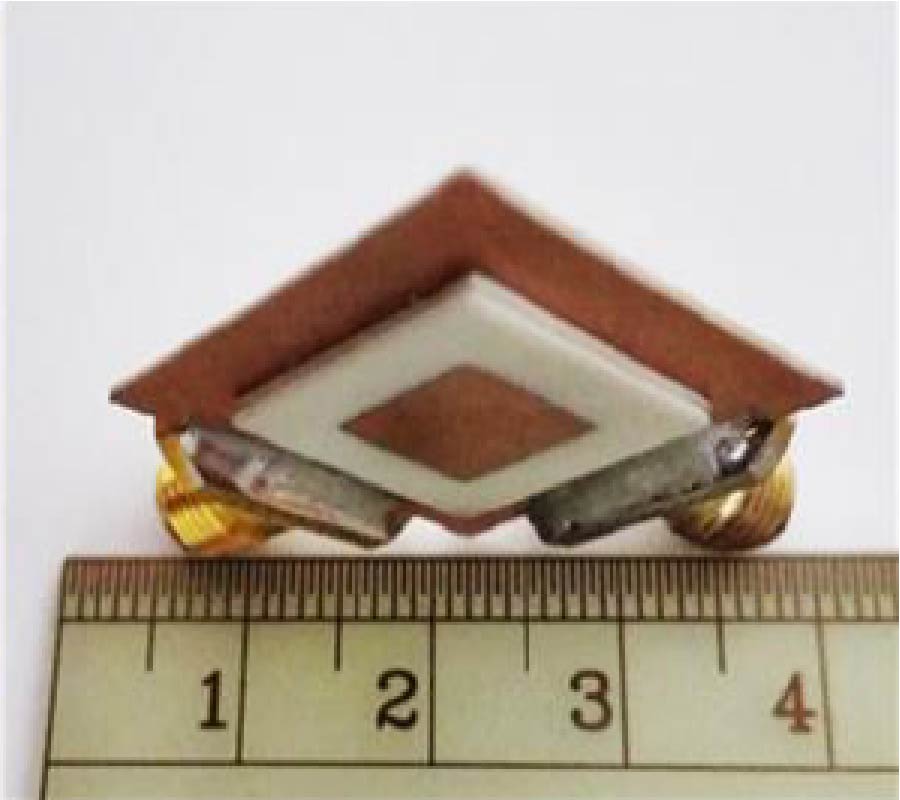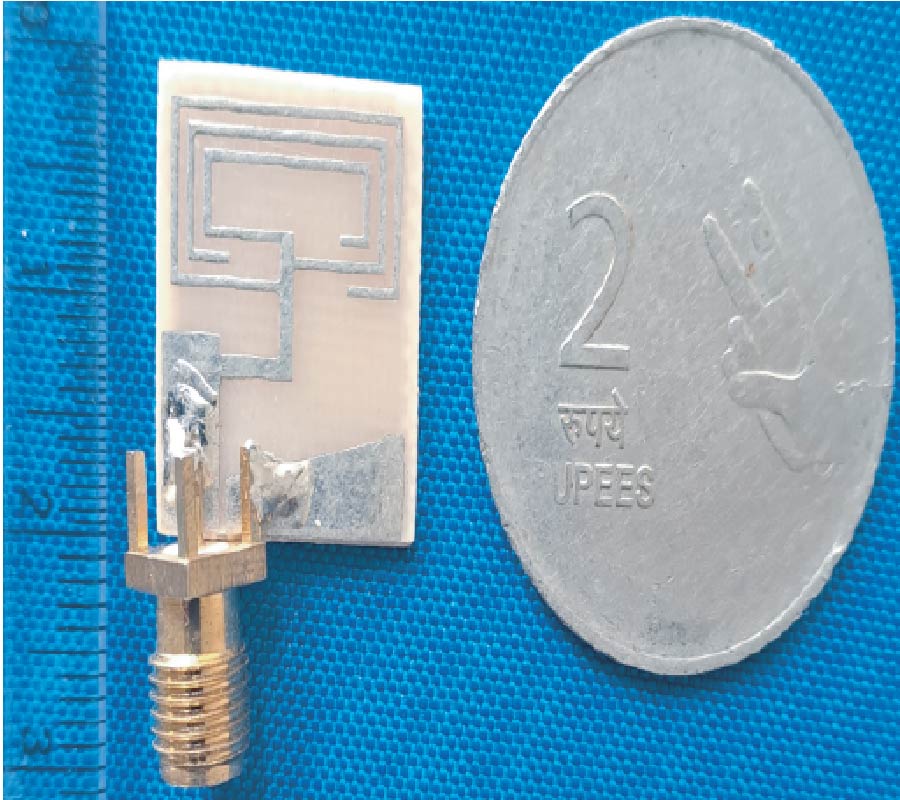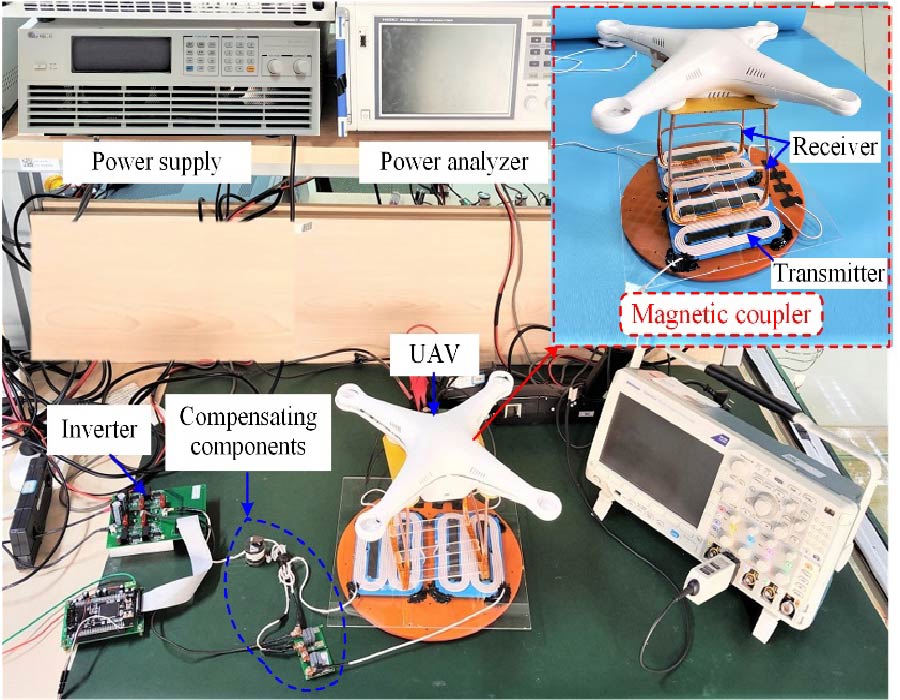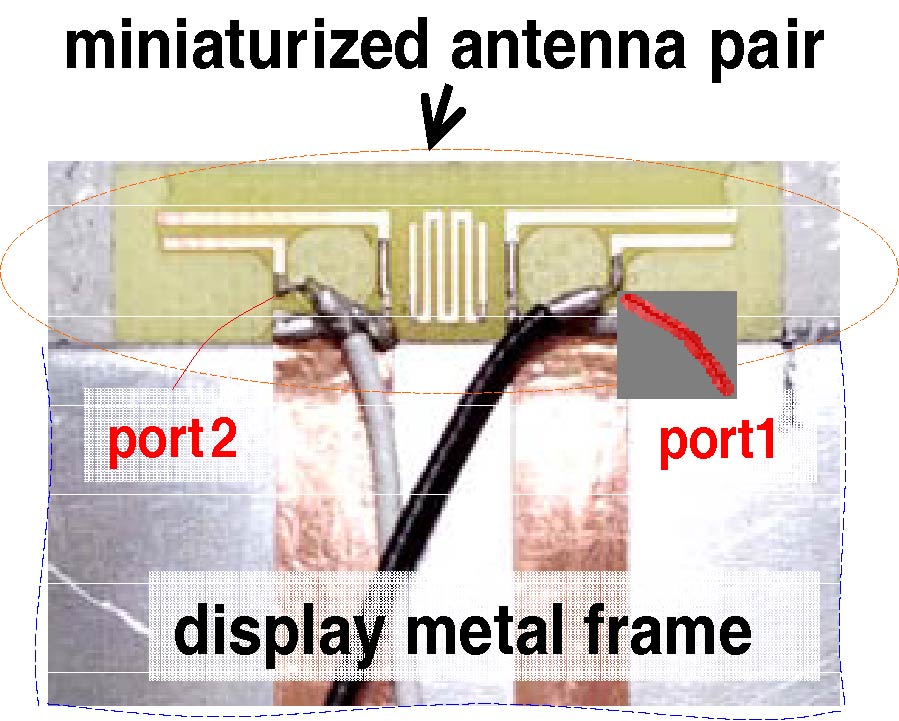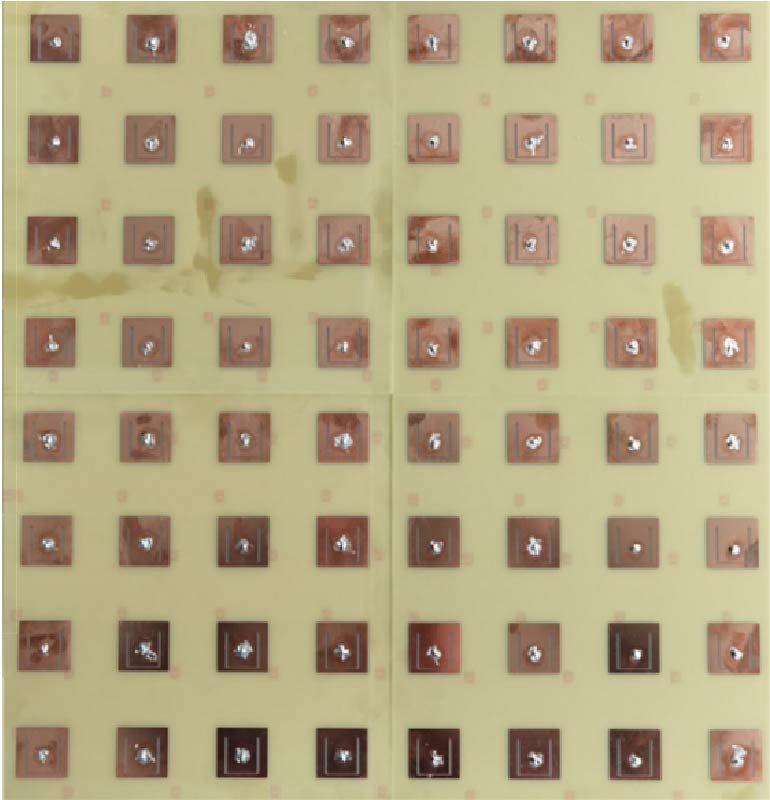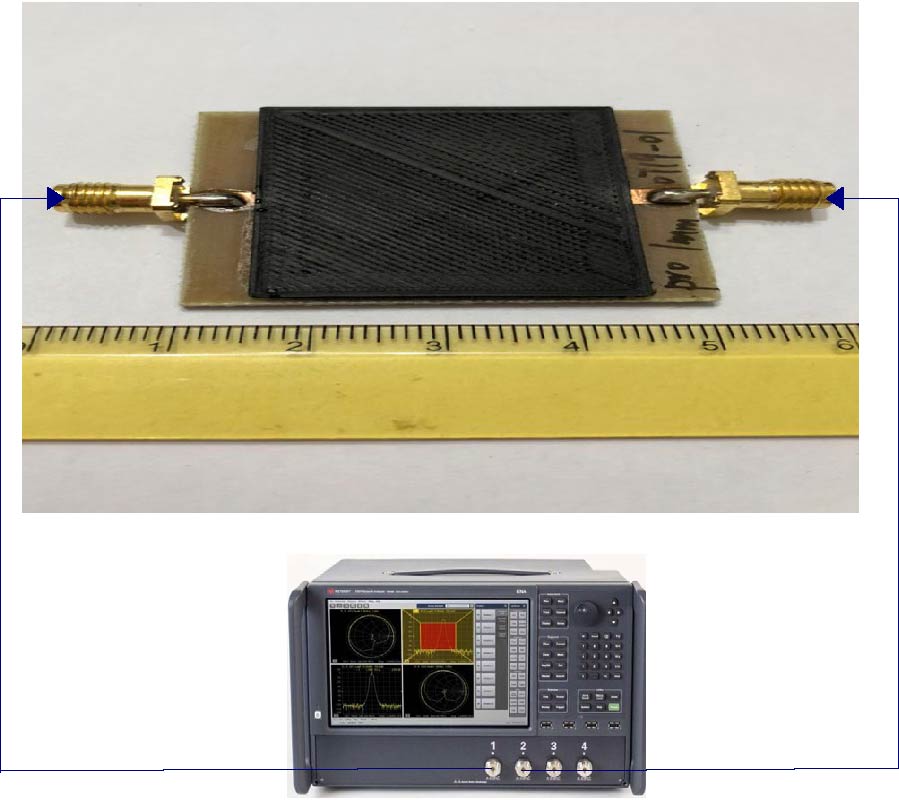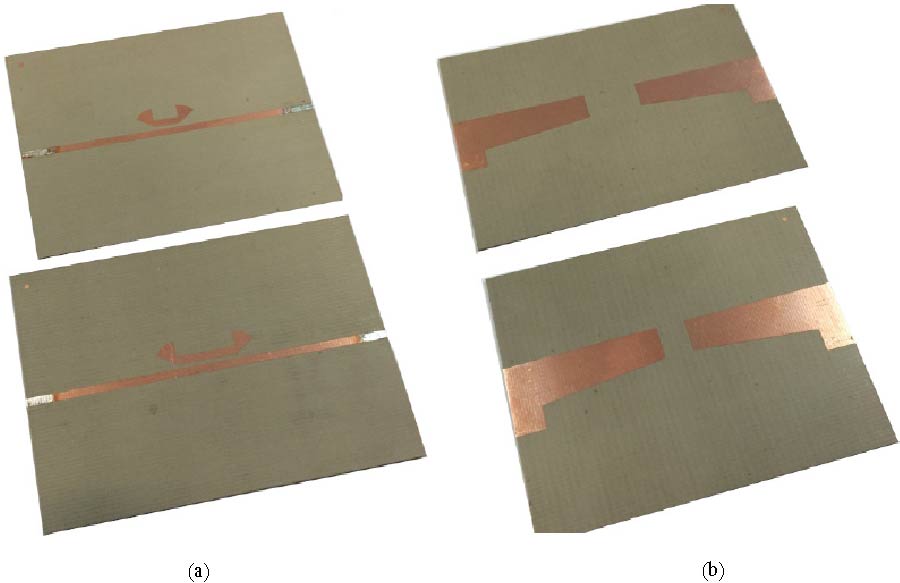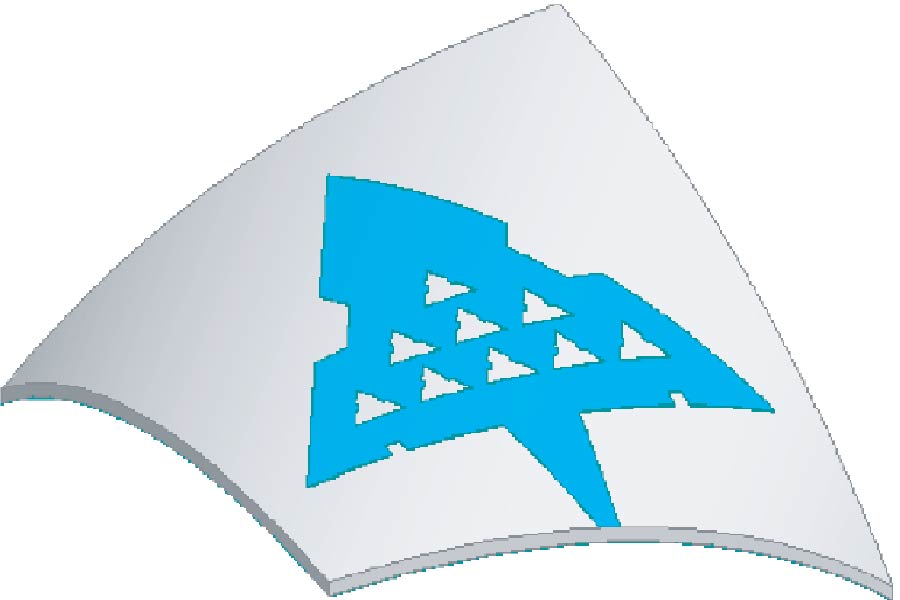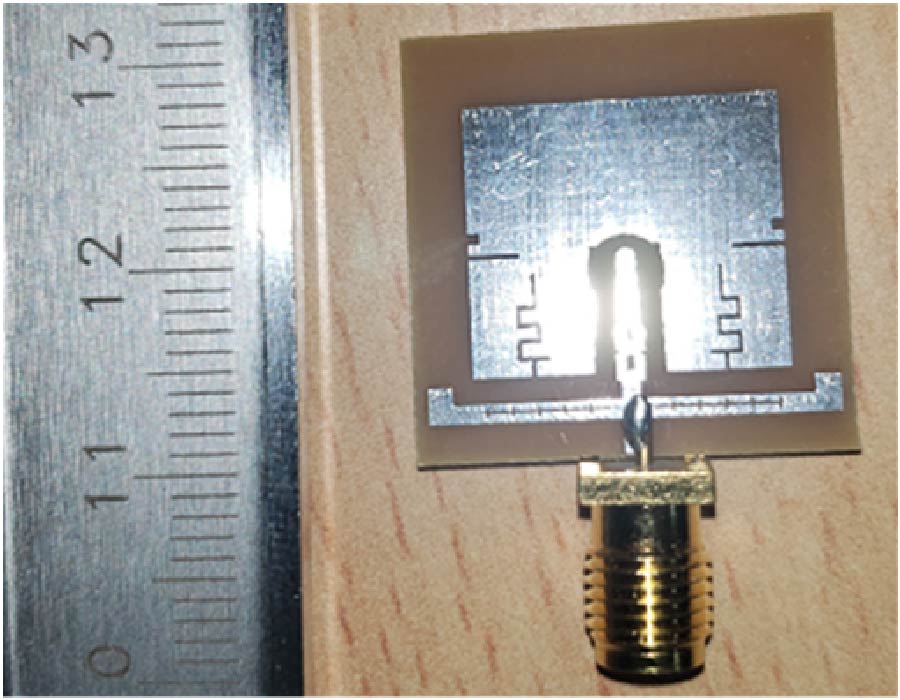2022-11-22 Latest Published
By Ameet Mukund Mehta
Shankar B. Deosarkar
Anil Bapusa Nandgaonkar
Progress In Electromagnetics Research Letters, Vol. 107, 159-167, 2022
Abstract
A bidirectional, coplanar waveguide (CPW) fed dumbbell-shaped slot antenna with partially reflecting surface (PRS) with parasitic patches for gain, bandwidth, and radiation pattern improvement is investigated. A dumbbell-shaped CPW-fed slot antenna has a dimension of 0.71λg x 0.71λg x 0.0571λg. The proposed antenna is simple in design and has low profile structure. To achieve improvement in bandwidth, gain, and bidirectional radiation pattern, PRS with parasitic patches are placed on top and bottom of antenna at a distance of 0.25λg. The proposed design yields wide bandwidth of 4.11 GHz (4.48-8.59 GHz) with percentage bandwidth of 62.89%, S11 ≤ -10 dB, and peak gain of 5.61 dBi. The variation in the gain over desired bandwidth is less than 3 dB. The antenna is fabricated using an FR4 substrate with relative permittivity of 4.4. The measured results corroborate the design and stipulate the proposed structure to be suitable for applications in C Band.
